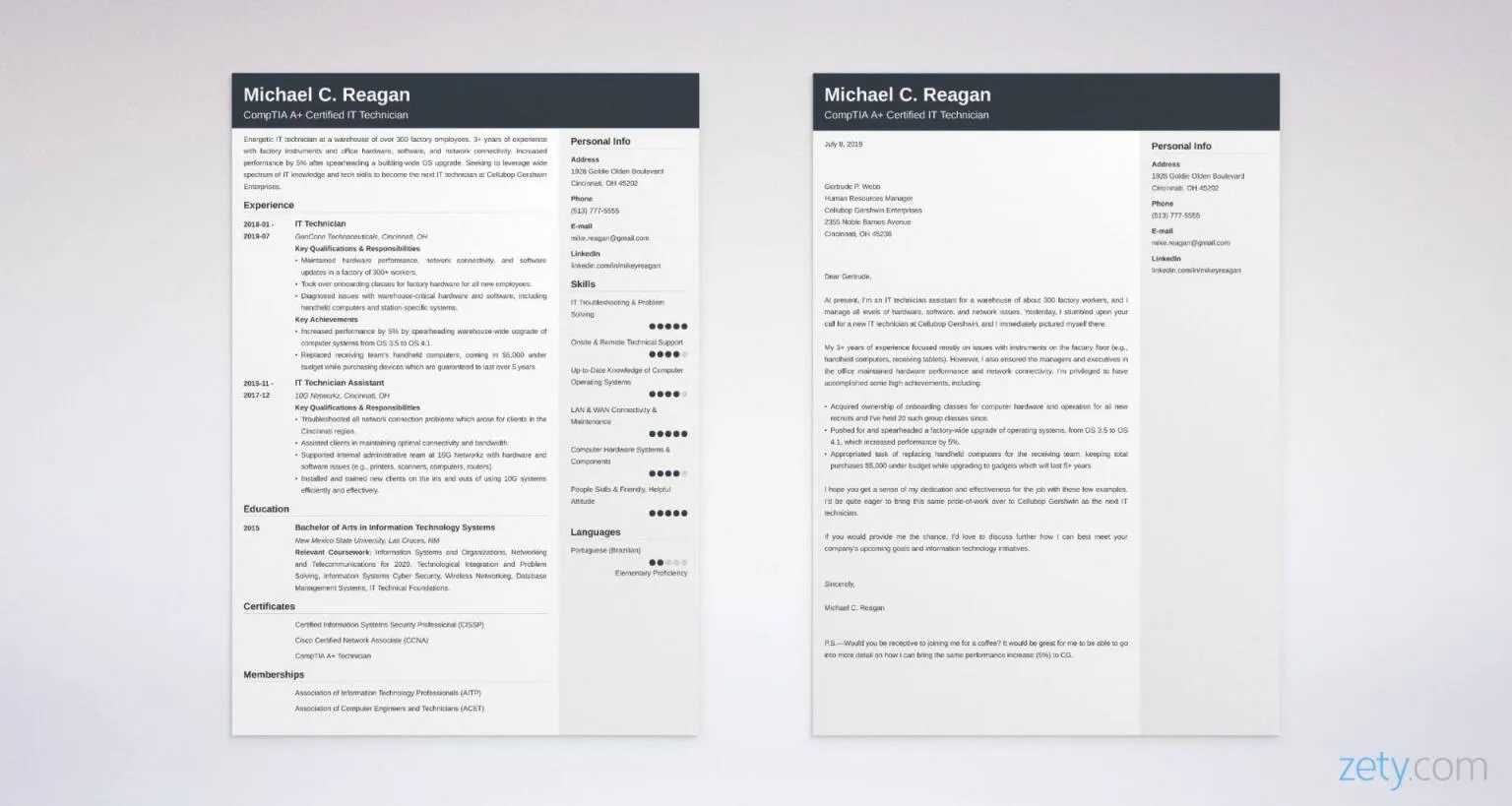Why a Cover Letter Matters for IT Technicians
In the competitive field of information technology, a well-crafted cover letter is your secret weapon. It’s not just a formality; it’s your first opportunity to make a strong impression on a potential employer. A compelling cover letter allows you to go beyond your resume, providing context, personality, and a glimpse into your potential as an IT technician. While your resume lists your skills and experience, the cover letter is where you tell your story, showcasing why you are the perfect fit for the role and the company. It’s your chance to demonstrate your understanding of the job requirements and your genuine interest in the position.
Highlighting Your IT Skills
Your cover letter should be a showcase of your IT prowess. Rather than just listing skills, provide examples of how you’ve used them. Mentioning specific projects or situations where you successfully applied your technical abilities adds credibility and demonstrates your practical knowledge. The key is to connect your skills with the specific requirements of the job. Read the job description carefully and tailor your cover letter to highlight the skills that are most relevant. This approach shows that you’re not just a generic applicant but someone who has taken the time to understand the needs of the company.
Technical Proficiency

Detail your proficiency in hardware and software. Mention specific operating systems, network configurations, and software applications you’re familiar with. If you have certifications or training in specific technologies, be sure to include them. For instance, if the job requires experience with Windows Server, highlight your relevant experience and certifications. Emphasize your ability to troubleshoot technical issues and provide solutions. Include examples of how you have resolved complex technical problems in the past, demonstrating your ability to think critically and solve problems under pressure. This should include your knowledge on how to configure the systems, maintain them and update them.
Problem-Solving Abilities
Problem-solving is at the core of an IT technician’s role. Highlight your ability to diagnose and resolve technical issues efficiently. Share examples of how you’ve approached troubleshooting in previous roles. Did you successfully identify and fix a network outage? Did you resolve a critical software bug? Provide specific details about the challenges you faced and the steps you took to find a solution. This demonstrates your proactive approach to problem-solving and your ability to remain calm and effective under pressure. Employers are looking for IT technicians who can independently find and resolve issues.
Hardware and Software Knowledge
Showcase your expertise in both hardware and software. Describe your experience with different types of hardware, such as servers, computers, printers, and networking equipment. Detail your understanding of software applications, operating systems, and network protocols. Mention any specialized software or tools you’re familiar with. Include your experience on configuring and maintaining the hardware and software of the company. If you’ve worked with virtualization technologies, cloud services, or security software, be sure to highlight that as well. Employers look for candidates who have wide-ranging experience.
Showcasing Relevant Experience
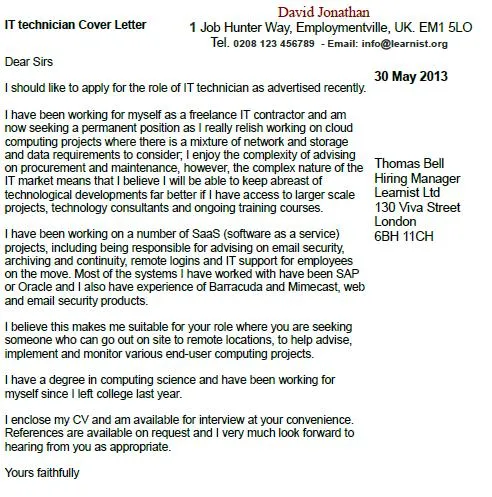
Your cover letter is an opportunity to bring your work experience to life. Don’t just list your previous roles; describe what you accomplished in each one. Use the STAR method (Situation, Task, Action, Result) to provide clear examples of your achievements. For instance, if you improved network performance in a previous role, describe the situation, the task you were assigned, the actions you took, and the positive results. This approach helps potential employers understand not only what you did but also how you did it and the value you brought to the company. You should mention the responsibilities you had on previous jobs.
Quantifying Accomplishments
Whenever possible, quantify your accomplishments. Use numbers and data to demonstrate the impact you’ve made in previous roles. Did you reduce help desk tickets by a certain percentage? Did you improve system uptime? Did you complete projects under budget or ahead of schedule? Quantifiable achievements are more impactful and make your cover letter stand out. For example, you might write, “Reduced network downtime by 15% through proactive monitoring and maintenance.” This gives the employer tangible evidence of your abilities and the value you can bring to their company. The more you can prove your contributions, the better.
Tailoring to the Job Description
Customize your cover letter for each job application. Review the job description carefully and highlight the skills and experience that align with the employer’s needs. Use the same keywords and phrases that are used in the job posting. This shows that you’ve read the job description and understand what the employer is looking for. Avoid sending generic cover letters; personalized letters show that you are genuinely interested in the role and the company. Tailoring your letter demonstrates that you are a strong candidate who is serious about the position and will do whatever it takes to get the job.
Formatting Your IT Technician Cover Letter
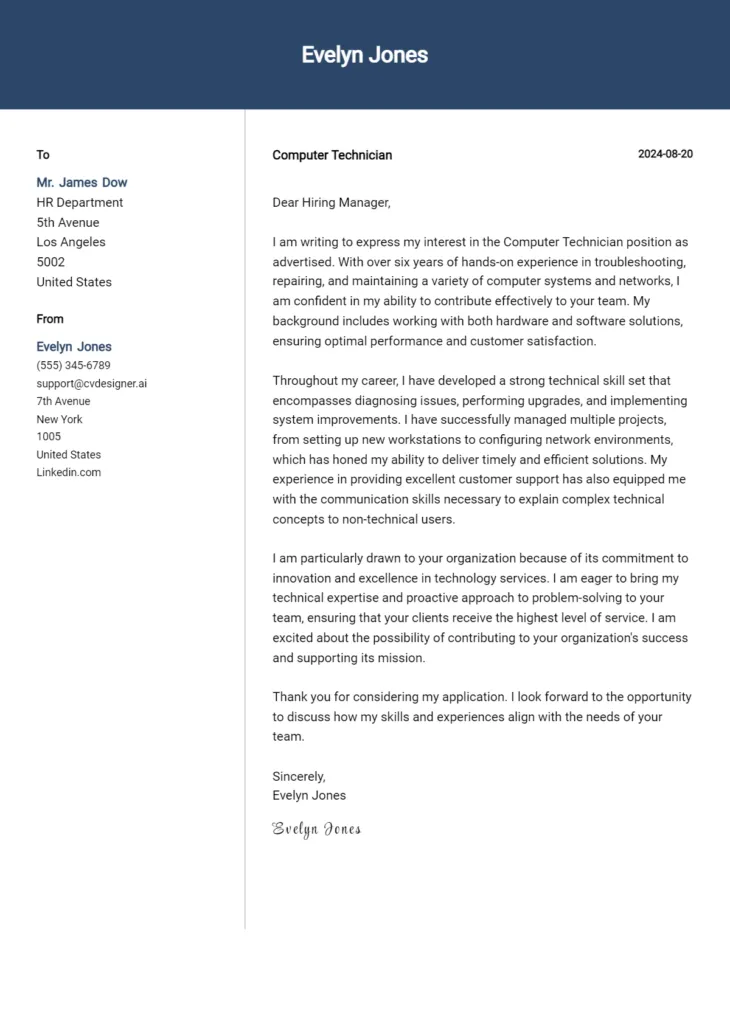
A well-formatted cover letter is essential for making a positive first impression. It should be easy to read and visually appealing. Use a professional font, such as Arial or Times New Roman, and maintain consistent formatting throughout the document. Ensure your cover letter is free of grammatical errors and typos. Proofread carefully before submitting your application. A clean and well-formatted cover letter shows attention to detail and professionalism, which are crucial qualities for an IT technician.
Header and Contact Information
Start with a professional header that includes your name, contact information (phone number, email address, and LinkedIn profile, if applicable), and the date. Include the hiring manager’s name and the company’s address if you know it. This information should be clearly displayed at the top of your cover letter. Make sure your contact information is up-to-date and professional. Using a professional email address is key, as well. This ensures the recruiter can easily reach you.
Professional Salutation
Address your cover letter to the hiring manager by name whenever possible. If you can’t find the hiring manager’s name, use a professional salutation such as “Dear Hiring Manager.” Avoid generic greetings like “To Whom It May Concern.” Addressing your cover letter to a specific person shows that you’ve done your research and are genuinely interested in the role. This personal touch can make your application stand out and grab the recruiter’s attention immediately. Research the company’s website and LinkedIn to find the hiring manager’s name.
Body Paragraphs Structure
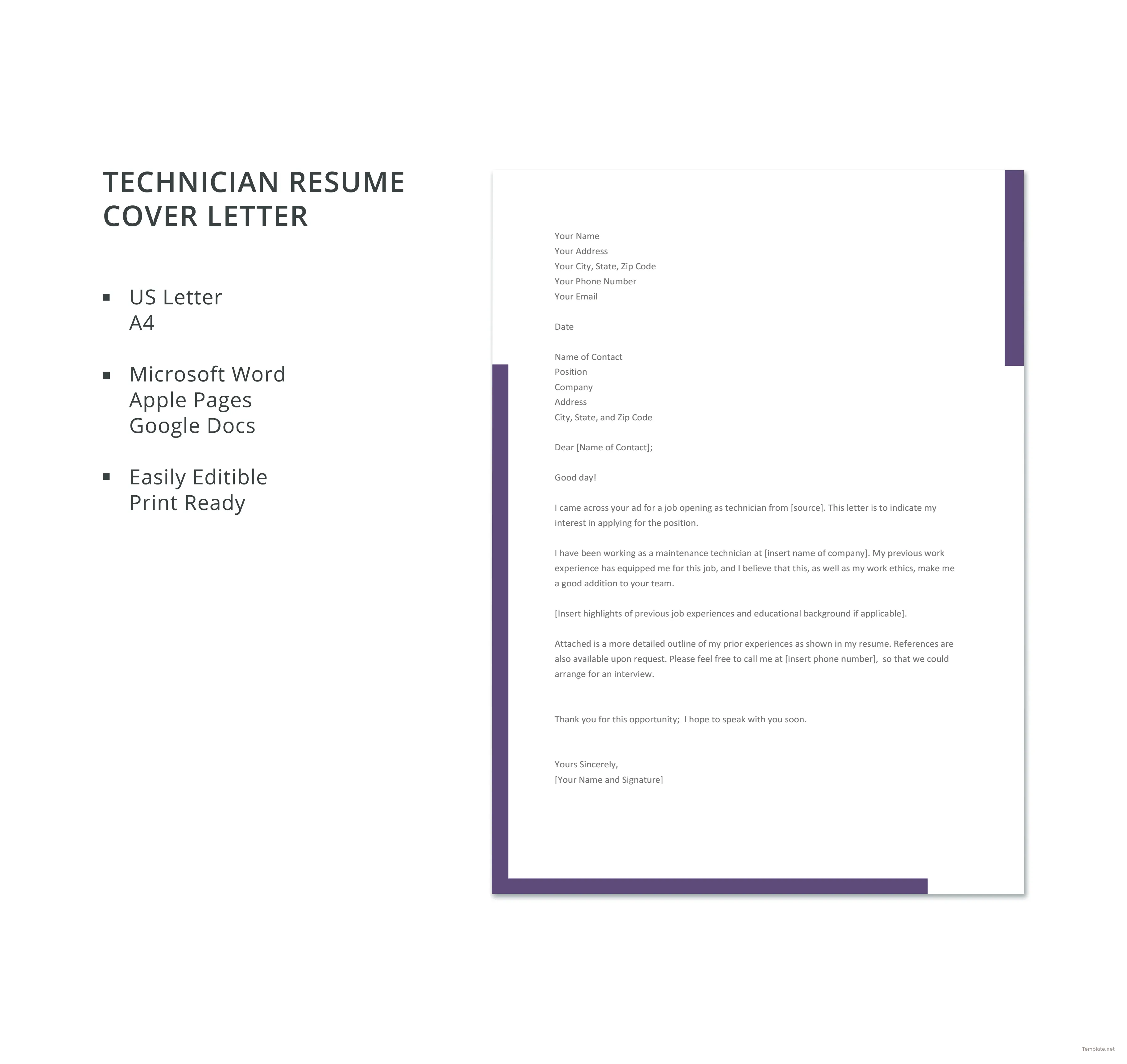
Structure your cover letter logically. Break the content into clear paragraphs, each focusing on a specific point. Use a concise and professional tone. Aim for a balance between providing enough detail and keeping the letter brief and to the point. The body of your cover letter should be well-organized and easy to read. The main body usually consists of three to four paragraphs. This allows you to present your skills, experience, and interest in a clear and concise manner. The goal is to present your qualifications in a way that is easy to understand and highlights your strengths.
First Paragraph: Grab Attention
Start your cover letter with a strong opening that grabs the reader’s attention. State the position you are applying for and where you found the job posting. Briefly mention why you are interested in the company and the role. The first paragraph sets the tone for your entire cover letter. Make sure your opening statement is enthusiastic and demonstrates your understanding of the company and the position. A strong opening paragraph can pique the hiring manager’s interest and make them want to continue reading.
Middle Paragraphs: Skills and Experience
In the middle paragraphs, showcase your relevant skills and experience. Use the STAR method to provide specific examples of your accomplishments. Tailor your examples to the requirements of the job description. Focus on the experiences that best demonstrate your qualifications for the role. Provide quantifiable results whenever possible. These paragraphs should provide a detailed look at your professional background. This section should highlight your most important skills and accomplishments, making them directly relevant to the job.
Final Paragraph: Call to Action
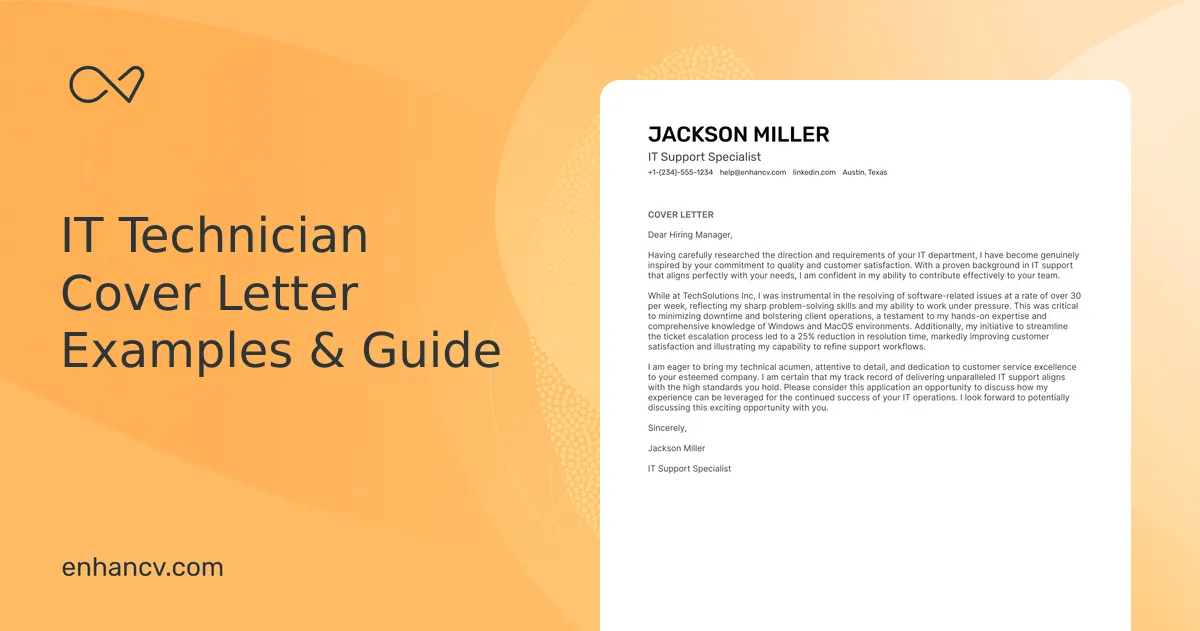
End your cover letter with a strong call to action. Express your enthusiasm for the opportunity and reiterate your interest in the position. Include a statement about your availability for an interview and thank the hiring manager for their time and consideration. In addition, you can mention that you have attached your resume, which provides further details about your experience and skills. A well-crafted closing paragraph leaves a positive impression and encourages the hiring manager to take the next step.
Essential Soft Skills for IT Technicians
While technical skills are essential, soft skills are equally important for IT technicians. These skills enable you to work effectively with others, communicate clearly, and manage your time efficiently. Highlight these soft skills in your cover letter to show that you’re not only technically proficient but also a well-rounded candidate.
Communication Skills
Strong communication skills are vital for IT technicians. Explain complex technical concepts in a way that non-technical individuals can understand. Demonstrate your ability to actively listen and ask clarifying questions. Provide examples of situations where you successfully communicated technical information to colleagues or clients. This can include writing clear and concise documentation. Excellent communication skills prevent miscommunication and ensure that all parties are on the same page, leading to more efficient problem-solving. Being able to communicate to different levels of tech-savviness is critical to the role.
Teamwork and Collaboration

IT technicians often work as part of a team. Highlight your ability to collaborate effectively with others. Provide examples of how you have worked successfully with colleagues to achieve common goals. Mention any experience you have working on projects with other IT professionals or with members of other departments. Teamwork skills demonstrate your ability to contribute to a positive and productive work environment. Your ability to work well with other team members shows your willingness to help and support the rest of your team.
Time Management and Organization
IT technicians often juggle multiple tasks and projects. Demonstrate your ability to manage your time effectively and stay organized. Mention any tools or techniques you use to prioritize tasks, meet deadlines, and keep track of your work. Provide examples of how you have managed multiple projects simultaneously. Effective time management and organization are essential for meeting deadlines and delivering high-quality work. Employers are looking for IT technicians who can manage their time wisely and deliver results efficiently.
Common Mistakes to Avoid in Your Cover Letter
Avoid these common mistakes to increase your chances of getting hired. Pay attention to detail and ensure your cover letter is free of errors. A polished cover letter reflects professionalism and shows that you’ve taken the time to present yourself in the best possible light.
Generic Cover Letters
Avoid sending generic cover letters that are not tailored to the specific job. Generic cover letters show a lack of interest and effort. Customize your cover letter for each job application. Research the company and the role and tailor your cover letter to demonstrate your understanding of their needs. Personalize your cover letter to show you are genuinely interested in the position and the company. Generic letters show laziness and lack of care.
Typos and Grammatical Errors
Proofread your cover letter carefully for typos and grammatical errors. Errors can make your cover letter appear unprofessional and can hurt your chances of getting an interview. Check your cover letter multiple times. Ask someone else to review it for you. Pay close attention to spelling, grammar, and punctuation. A cover letter that is free of errors shows that you pay attention to detail and are a professional individual.
Lack of Enthusiasm
Show enthusiasm for the position and the company. Express your genuine interest in the role and explain why you are a good fit. Avoid sounding indifferent or uninspired. Use positive and engaging language to demonstrate your passion for IT and your eagerness to contribute. Let your enthusiasm shine through and express your excitement about the opportunity. Make the recruiter believe you actually want the job.
Closing Your Cover Letter Effectively
End your cover letter with a strong conclusion. Reiterate your interest in the position and express your gratitude for the opportunity. Include a call to action and provide your contact information. Express your anticipation of hearing back from the hiring manager. A strong closing leaves a lasting impression and encourages the hiring manager to move your application forward. Ending your cover letter effectively can significantly increase your chances of success and help you land your dream job. Show your appreciation and your desire to contribute to their team.
